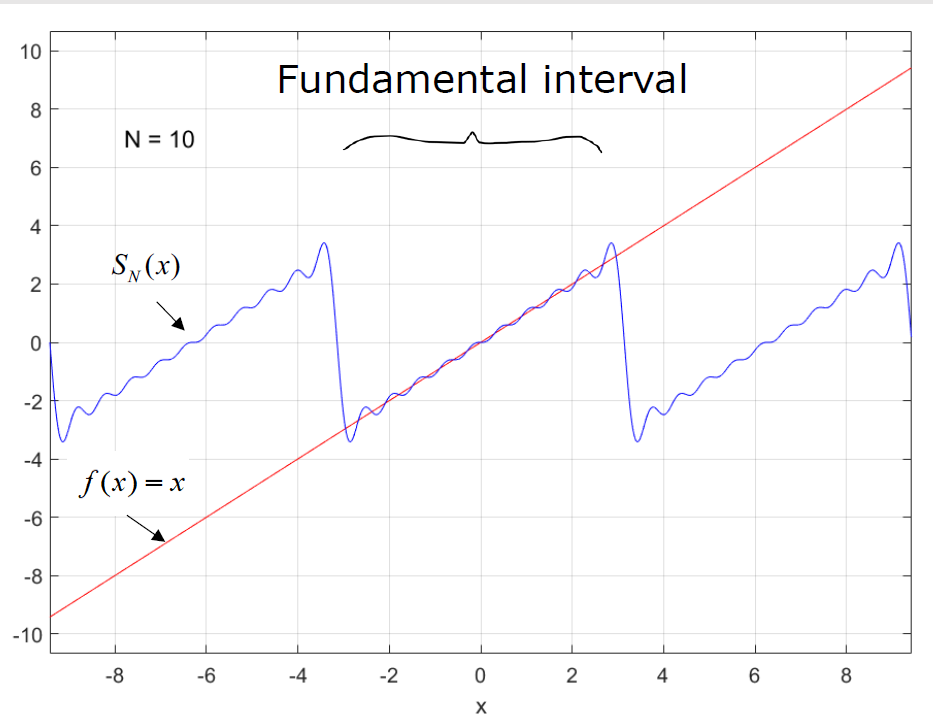Fourier Series Analysis: Exercises and Solutions
Fourier series for a function in the interval -π ≤ x ≤ π
Fourier coefficients:
Example: Find the Fourier series for the function f(x) = x
Approximating a function using a finite sum of the Fourier series: f(x) ≈ SN(x)
Example: F(x) = x

The Fourier series of a function converges on its periodic extension

Odd and even functions
| Type | Definition | Example | Fourier Coefficients |
|---|---|---|---|
| Odd function | \( f(-x) = -f(x) \) | \( x^3 \) | \( a_0 = 0,\ a_n = 0 \) |
| Even function | \( f(-x) = f(x) \) | \( x^2 \) | \( b_n = 0 \) |
Facts:
- A function may be even, odd, or neither.
- Any function \( f(x) \) can be written as the sum of an even function and an odd function.
Fourier Series Practice Exercises
Exercise 1: Given the function f(x) = |x| − π/2
Question 1
a) Determine if the function is odd or even or neither, and based on that decide which,
if any, of the Fourier coefficients vanish.
Question 2
b) The Fourier series for this function in the fundamental interval \( -\pi < x < \pi \) is given as:
Write this series term-by-term by explicitly showing only the first three non-zero terms, replacing the rest by the ellipsis "..."
Question 3
c) Calculate the truncation errors associated with this series at the value x = π/3, for finite
sums containing only the first one, two and three non-zero terms.
Question 4
d) Sketch the function and its periodic extensions.
Use plotting software to plot the finite sum consisting of the first three non-zero terms.
Exercise 2: Given the function f (x) = x3
Question 1
a) Determine if the function is odd or even or neither, and based on that decide which, if any,
of the Fourier coefficients vanish.
Question 2
The Fourier series for this function in the fundamental interval \( -\pi < x < \pi \) is given as:
Question 3
Calculate the truncation errors associated with this series at the value x = 0.8, for finite
sums containing only the first one, two and three non-zero terms.